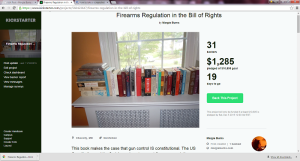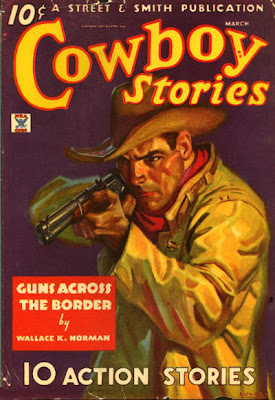Ridicule was much used in Britain when the American colonies agitated for liberty as British subjects. Not that ridicule was the only response to American petitions and American laws–many well-informed Britons sympathized with the Americans. But among the British responses in the 1760s and 1770s, some were penned by early Charles Krauthammers and George Wills.
Take for example the commentary below by a British writer and Member of Parliament named Soame Jenyns, in 1764. Jenyns’ is not a household name today, but having been born into an affluent family, Jenyns was elected to Parliament in 1742, and used his position as a base for authorship underwritten by his cohort, the nobility and gentry. (The cronyism resembled the more recent partnership between Simon & Schuster and The Washington Post, except with inherited titles.) He ridiculed Dr. Samuel Johnson, wrote poems and essays on public policy and dancing, and was among those calling for a national militia system for Britain. In 1764, Jenyns published a pamphlet titled Objections to the Taxation of our American Colonies–meaning a reply to American objections to the proposed Stamp Act–in which he tried to defend the supremacy of Parliament over American legislatures. The rhetorical tack was ridicule. When American subjects reminded their British friends and relatives of the liberty of an Englishman, Jenyn replied,
The libery [sic] of an Englishman, is a phrase of so various a signification, having within these few years been used as a synonymous term for blasphemy, bawdy, treason, libels, strong beer, and cyder, that I shall not here presume to define its meaning;
“What is truth? said jesting Pilate, and would not stay for an answer.
Jenyns went on to his core issue, which was revenue:
but I shall venture to assert what it cannot mean; that is, an exemption from taxes imposed by the authority of the Parliament of Great Britain; nor is there any charter, that ever pretended to grant such a privilege to any colony in America; and had they granted it, it could have had no force; their charters heing [sic] derived from the Crown, and no charter from the Crown can possibly supersede the right of the whole legislature:
Descending rapidly from witty to ponderous, Jenyns then ran to cover in the legalism of “corporations”:
their charters are undoubtedly no more than those of all corporations, which impower them to make byelaws, and raise duties for the purposes of their own police, for ever subject to the superior authority of parliament; and in some of their charters, the manner of exercising these powers is specified in these express words, “according to the course of other corporations in Great-Britain”: and therefore they can have no more pretence to plead an exemption from this parliamentary authority, than any other corporation in England.
Set aside the question whether Britons considered the charters of the American colonies “no more than” the charters of “any other corporation.” Americans themselves disagreed, nor did they envision their settlements as corporations. While some of the founders such as Ben Franklin raised occasional doubts about the protections provided by charters, more colonists tried to treat the charters of the New World as their version of Magna Carta, especially as the Revolutionary War approached.
Jenyns’ pamphlet–like that of Dr. Johnson in 1775, titled Taxation No Tyranny–failed to turn the tide of history. The Stamp Act was passed in 1765; it was repealed after furor in 1766; but the central claim of parliament’s supremacy over American law remained unresolved, to put it nicely, until the American Revolution. Even Aristophanes’ ridicule failed to recall the Greeks to their senses, in the Peloponnesian War; Jenyns’ could hardly have had much effect on Great Britain, even if he had supported the right side.
The references to Jenyns above come from material left over from my book, Firearms Regulation in the Bill of Rights. I would have liked to include Jenyns’ commentary, but there was no extra space to devote to British reactions to American rights. Most of my book concerns the rights themselves. Figures like Soame Jenyns went to the cutting-room floor. With luck, historians in a future century can afford to do the same with Donald Trump and Ted Cruz.
Full disclosure: I am launching a campaign on Kickstarter to cover the costs of printing the book, today’s version of publishing ‘by subscription’ as they called it in the eighteenth century. Speaking of American rights, Trump’s supporters will hate this book. They don’t tend to take kindly to someone’s actually reading the Constitution and the Bill of Rights. They don’t love it when someone actually knows English, either.
This blog entry concerns the book, and the book is not separate from current events. That said, some things are interesting purely as history. A few examples:
- Eighteenth century: A copy of Charles Pinckney‘s draft of a U.S. constitution may still exist
- An American snark against a royalist colonial governor became part of the constitutional language of American public documents
- Entire artillery units in 1789 killed fewer soldiers than a single weapon today
- For decades, the line between newspapers and public documents was rather thin (as were the newspapers), because the press was so largely devoted to communiqué, re-publishing circulars, declarations, and public letters. In this regard, today’s newspapers have returned to eighteenth-century form.
- Nineteenth century: A Dred Scott judge reworded the Second Amendment in a judicial decision, to give a pass to Confederate organizing
- Republican Party platforms in the new party supported the rights of former slaves, immigrants, and refugees, generating several later constitutional amendments
There were some bright lights. Firebrand printers up and down the East Coast clearly saw themselves as passing on the beacon light of freedom, rights and liberties, in the Revolutionary Era. (My thanks to Eric Burns–no relation–for his observations on the remarkable high literacy rate in early America.) After 1782, they saw themselves as providing guidance for civil business in the new nation.
Naturally, much American public discourse began with British sources–the documents forming British constitutional law over centuries; legal writing like Blackstone’s Commentaries; English dictionaries; and British newspapers and other periodicals. But the history of early printing in America points to what interested the American colonists. Americans were big on print. They believed strongly in preserving a written record–a belief attacked root and branch by the Stamp Act, which was about more than money. They believed in having statements of principles reduced to writing, to which they could refer self and others.
Back before the new continent was settled by Europeans, my discussion includes historical and linguistic research in early dictionaries and other sources, from Old English through Middle English and the Renaissance (early modern), in Chapter 2.
Going forward, Chapter 5 deals with the U.S. in the nineteenth century, when the language that had been used to unite the new nation, the century before, was used to polarize it.
The project incorporates archival research into primary sources and entailed consulting hundreds of source documents including early newspapers and early dictionaries, some in the Library of Congress collections and the National Archives; some in other helpful databases like the Online Library of Liberty. Shelf-miles of rich historical material are now accessible on site and remotely, but no other book has been written on this subject, with the same parameters (sources, range), using modern corpus methods to explore the large text repositories.
The book is interdisciplinary, or course. In spite of some specialized language (at times), it is written for educated lay readers as well as for historians and legal scholars; for constitutional scholars, jurists, and a general audience.
–And speaking of leftover material: I have not yet written the Afterword. I have to decide whether to include a recent comment by a federal judge, that the word “arms” is plural. (Does he cut a piece of paper with one scissor? Have his friends asked him whether he puts on his pant one leg at a time? The word can be plural, of course; it is also singular.)
One statement I do plan to put in the Afterword is something along the line of ‘This entire book is a series of footnotes to John Phillip Reid’s Constitutional History of the American Revolution.









